A brief history of how microscopic studies led to the elucidation of the 3D architecture and macromolecular organization of higher plant thylakoids
- PMID: 33017036
- PMCID: PMC7541383
- DOI: 10.1007/s11120-020-00782-3
A brief history of how microscopic studies led to the elucidation of the 3D architecture and macromolecular organization of higher plant thylakoids
Abstract
Microscopic studies of chloroplasts can be traced back to the year 1678 when Antonie van Leeuwenhoek reported to the Royal Society in London that he saw green globules in grass leaf cells with his single-lens microscope. Since then, microscopic studies have continued to contribute critical insights into the complex architecture of chloroplast membranes and how their structure relates to function. This review is organized into three chronological sections: During the classic light microscope period (1678-1940), the development of improved microscopes led to the identification of green grana, a colorless stroma, and a membrane envelope. More recent (1990-2020) chloroplast dynamic studies have benefited from laser confocal and 3D-structured illumination microscopy. The development of the transmission electron microscope (1940-2000) and thin sectioning techniques demonstrated that grana consist of stacks of closely appressed grana thylakoids interconnected by non-appressed stroma thylakoids. When the stroma thylakoids were shown to spiral around the grana stacks as multiple right-handed helices, it was confirmed that the membranes of a chloroplast are all interconnected. Freeze-fracture and freeze-etch methods verified the helical nature of the stroma thylakoids, while also providing precise information on how the electron transport chain and ATP synthase complexes are non-randomly distributed between grana and stroma membrane regions. The last section (2000-2020) focuses on the most recent discoveries made possible by atomic force microscopy of hydrated membranes, and electron tomography and cryo-electron tomography of cryofixed thylakoids. These investigations have provided novel insights into thylakoid architecture and plastoglobules (summarized in a new thylakoid model), while also producing molecular-scale views of grana and stroma thylakoids in which individual functional complexes can be identified.
Keywords: Atomic force microscopy; Chloroplasts; Electron microscopy; Electron tomography; Freeze-fracture electron microscopy; Thylakoid model.
Conflict of interest statement
No conflicts of interest and no outside funding.
Figures



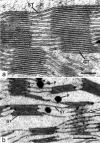




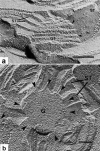

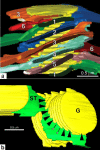
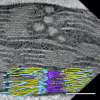



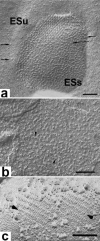

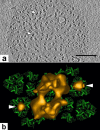


Similar articles
-
Three-dimensional architecture of grana and stroma thylakoids of higher plants as determined by electron tomography.Plant Physiol. 2011 Apr;155(4):1601-11. doi: 10.1104/pp.110.170647. Epub 2011 Jan 11. Plant Physiol. 2011. PMID: 21224341 Free PMC article.
-
Chloroplast structure: from chlorophyll granules to supra-molecular architecture of thylakoid membranes.Photosynth Res. 2003;76(1-3):185-96. doi: 10.1023/A:1024994525586. Photosynth Res. 2003. PMID: 16228577
-
Dynamic flexibility in the structure and function of photosystem II in higher plant thylakoid membranes: the grana enigma.Photosynth Res. 2008 Oct-Dec;98(1-3):575-87. doi: 10.1007/s11120-008-9381-3. Epub 2008 Nov 8. Photosynth Res. 2008. PMID: 18998237 Review.
-
Insights into the complex 3-D architecture of thylakoid membranes in unicellular cyanobacterium Cyanothece sp. ATCC 51142.Plant Signal Behav. 2011 Apr;6(4):566-9. doi: 10.4161/psb.6.4.14946. Epub 2011 Apr 1. Plant Signal Behav. 2011. PMID: 21445014 Free PMC article.
-
Structure and dynamics of thylakoids in land plants.J Exp Bot. 2014 May;65(8):1955-72. doi: 10.1093/jxb/eru090. Epub 2014 Mar 12. J Exp Bot. 2014. PMID: 24622954 Review.
Cited by
-
Comparative Insights into Photosynthetic, Biochemical, and Ultrastructural Mechanisms in Hibiscus and Pelargonium Plants.Plants (Basel). 2024 Oct 9;13(19):2831. doi: 10.3390/plants13192831. Plants (Basel). 2024. PMID: 39409701 Free PMC article.
-
How to Measure Grana - Ultrastructural Features of Thylakoid Membranes of Plant Chloroplasts.Front Plant Sci. 2021 Oct 6;12:756009. doi: 10.3389/fpls.2021.756009. eCollection 2021. Front Plant Sci. 2021. PMID: 34691132 Free PMC article. Review.
-
Cryo-ET reveals the in situ architecture of the polar tube invasion apparatus from microsporidian parasites.Proc Natl Acad Sci U S A. 2025 Mar 18;122(11):e2415233122. doi: 10.1073/pnas.2415233122. Epub 2025 Mar 11. Proc Natl Acad Sci U S A. 2025. PMID: 40067903
-
State transition is quiet around pyrenoid and LHCII phosphorylation is not essential for thylakoid deformation in Chlamydomonas 137c.Proc Natl Acad Sci U S A. 2022 Sep 13;119(37):e2122032119. doi: 10.1073/pnas.2122032119. Epub 2022 Sep 6. Proc Natl Acad Sci U S A. 2022. PMID: 36067315 Free PMC article.
-
Eukaryotic Cell Membranes: Structure, Composition, Research Methods and Computational Modelling.Int J Mol Sci. 2023 Jul 7;24(13):11226. doi: 10.3390/ijms241311226. Int J Mol Sci. 2023. PMID: 37446404 Free PMC article. Review.
References
-
- Adam Z, Charuvi D, Tsabari O, Knopf RR, Reich Z. Biogenesis of thylakoid networks in angiosperms: knowns and unknowns. Plant Mol Biol. 2011;76:221–234. - PubMed
Publication types
MeSH terms
LinkOut - more resources
Full Text Sources
Other Literature Sources

